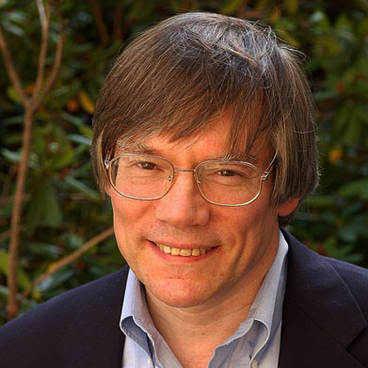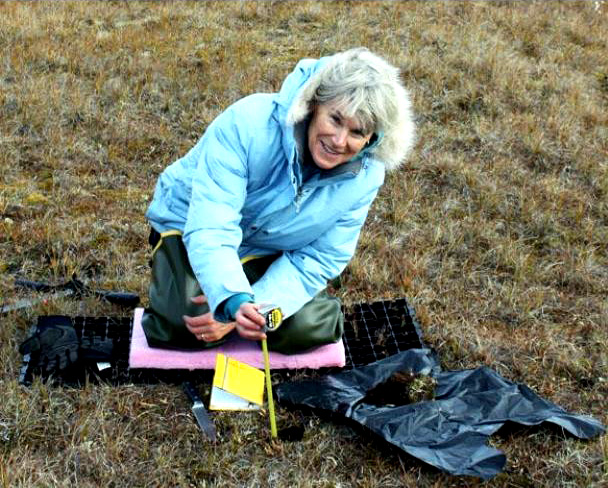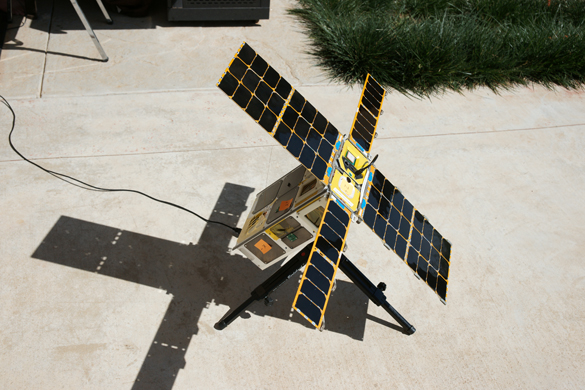 Courtesy/FBI
Courtesy/FBI
VIDEO: Leonardo Mascheroni Of Los Alamos Offering Nuclear Weapons To Venezuela
In FBI undercover video and audio recordings, Pedro Leonardo Mascheroni of Los Alamos explains to undercover agent Jimenez that he had a “top of the top” clearance and that he held a security clearance from the Department of Defense and from the Department of Energy.
Mascheroni, 79, a naturalized U.S. citizen from Argentina, was recently sentenced to 60 months in prison for Atomic Energy Act and other violations relating to his communication of classified nuclear weapons data to a person he believed to be a Venezuelan government official.
Mascheroni is captured on video telling “Jimenez” that he knows how to design a nuclear warhead and that his program has two targets – nuclear weapons and commercial energy – and that his laser can be converted to another type of laser that is capable of blinding spy satellites and can finish them off in an afternoon.
Mascheroni declares that the U.S. is going to be hungry for oil and would love to control Venezuela’s oil. He tells Jimenez to, “Picture the following scenario: Picture that Venezuela could have 40 nuclear weapons” by 2020 and that that would keep the United States from invading Venezuela.”
https://ladailypost.comcontent/watch-pedro-leonardo-mascheroni-los-alamos-video-offering-nuclear-weapons-venezuela
 Los Alamos National Laboratory biomedical researcher Alina Deshpande is working on speeding awareness and strengthening global resilience against infectious diseases. Courtesy/LANL
Los Alamos National Laboratory biomedical researcher Alina Deshpande is working on speeding awareness and strengthening global resilience against infectious diseases. Courtesy/LANL
LANL Closes A Gate On Infectious Diseases
What’s the latest on chikungunya?
Don’t know? Never heard of it? Don’t feel bad. Not many people outside the health profession have encountered this disturbing, infectious disease that has hit parts of southwestern Mexico very hard this month.
So try this: Go to swap.lanl.gov where there is an option box labelled “Select a Disease.” Click on the down arrow to open the box and – what do you know? The first disease on the list is “chikungunya.” Click it and a fact sheet appears that can bring you up to speed.
The window is part of Los Alamos National Laboratory’s biosurveillance gateway, a web portal still in development that brings together a large and expanding body of specialized information designed to provide the global health and science community with a useful set of tools.
https://ladailypost.comcontent/lanl-closes-gate-infectious-diseases
 Alan Guth will deliver the J. Robert Oppenheimer Memorial Lecture Monday. Courtesy photo
Alan Guth will deliver the J. Robert Oppenheimer Memorial Lecture Monday. Courtesy photo
Alan Guth is not just one of the leading cosmologists in the world; he is widely viewed as a rock star cosmologist in a time of revolutionary advances. The distinguished Victor F. Weisskopf Professor of Physics at the Massachusetts Institute of Technology, Guth is best known for his leading role in developing the theory of inflationary cosmology.
In 1979, he had what he labeled in a note to himself, a “spectacular realization” about the birth of the universe. Since then he continues to refine a cosmological foundation that can account for observable phenomena from the early universe that cannot otherwise be explained.
“I’ll talk about how inflation does not necessarily rigorously imply, but it does suggest that our universe is very likely a part of a larger universe; and that is because almost all inflationary models, almost all detailed versions of inflation, have the property that once inflation starts it never stops completely.” Guth said. “It stops in places and where inflation stops another universe will form, and we call those pocket universes.”
https://ladailypost.comcontent/oppenheimer-lecture-alan-guth-talks-cosmic-inflation-and-multiverse
 Cathy Wilson says, ‘I am collecting shallow cores to quantify the depth of the peat layer in the soil. The peat thickness strongly controls the transfer of heat from the atmosphere into the deeper soil, which impacts how deep the soil thaws each year. We then use the hole in the ground to perform hydrologic measurements. Peat depth and hydraulic conductivity are two important parameters that go into our models that predict the rates of permafrost thaw.’ Courtesy photo
Cathy Wilson says, ‘I am collecting shallow cores to quantify the depth of the peat layer in the soil. The peat thickness strongly controls the transfer of heat from the atmosphere into the deeper soil, which impacts how deep the soil thaws each year. We then use the hole in the ground to perform hydrologic measurements. Peat depth and hydraulic conductivity are two important parameters that go into our models that predict the rates of permafrost thaw.’ Courtesy photo
Environmental Research Reflected In Obama’s Trip To The Arctic
Not long after touching down in Anchorage, Alaska earlier this week, President Barack Obama spoke at an environmental conference, where he quickly introduced one of the main points of his visit.
“The Arctic temperatures are rising about twice as fast as the global average.” he said, noting that the Arctic region is the “leading edge” and the “leading indicator” of a potential environmental crisis that the entire world is facing.
In recent years, Los Alamos National Laboratory has expanded its national security activities to includea growing portfolio of climate change research and touching directly some of the same subjects that the President was talking about this week.
Speaking of the real-life effects of climate-change in Alaska, Obama said, “Thawing permafrost destabilizes the earth on which 100,000 Alaskans live, threatening homes, damaging transportation and energy infrastructure, which could cost billions of dollars to fix.”
https://ladailypost.comcontent/environmental-research-reflected-obama%E2%80%99s-trip-arctic
 ‘When I grow up I want to be a forensic scientist. I want to go to College at Penn State,’ said Jenny Kilde, 12, of Los Alamos Middle School. She was taking part in the Physics of Toys workshop, led by Ruth Howes and Nancy Watson Saturday at the Santa Fe Community College. Photo by Roger Snodgrass/ladailypost.com
‘When I grow up I want to be a forensic scientist. I want to go to College at Penn State,’ said Jenny Kilde, 12, of Los Alamos Middle School. She was taking part in the Physics of Toys workshop, led by Ruth Howes and Nancy Watson Saturday at the Santa Fe Community College. Photo by Roger Snodgrass/ladailypost.com
Girls Expand Horizons With Cool Science
They were hands on, down on the floor, up in the air and out in space.
About 180 girls, mostly fifth through eighth grade, attended the sixth annual Expanding Your Horizons Conference Saturday, hosted by Santa Fe Community College. The event, emphasized science, technology, engineering and math (STEM) and featured a variety of workshops and a science fair with posters and demonstrations.
These gatherings began more than 35 years ago in Los Alamos and now have several related get-togethers in Northern New Mexico throughout the year. The idea is to inspire girls to pursue STEM careers.
https://ladailypost.comcontent/girls-expand-horizons-cool-science
 Mobile facility managers Kim Nitschke and Paul Ortega scouted Antarctica with the Antarctica experiment co-investigator Johannes Verlinde to determine the ideal locations and infrastructure. Courtesy photo
Mobile facility managers Kim Nitschke and Paul Ortega scouted Antarctica with the Antarctica experiment co-investigator Johannes Verlinde to determine the ideal locations and infrastructure. Courtesy photo
Atmospheric Research Lab Bound For Antarctica
Los Alamos Daily Post
A big production is about to take place in a remote part of the world starting in November. A team of logistics specialists assembled from Los Alamos National Laboratory and several other national science labs brought key props and principal actors together for two months this summer in Pagosa Springs, Colo. for walk-throughs and rehearsals.
Now the sets and instruments and mobile living quarters, built to withstand 150 mile-an-hour winds and 40-degree-below temperatures, have been carefully packed in containers, and hauled to San Diego, where they are waiting to ship out to Christ Church, New Zealand. Due to arrive there Oct. 14, the package will be bundled aboard an Air Force C-17 Globemaster for a four-hour, 2,500 mile hop to reach home base at McMurdo Station in Antarctica.
Years in the planning, the Department of Energy’s Atmospheric Radiation Measurement (ARM) Climate Research Facility is about to deploy a new mobile facility for atmospheric and climatological field work in Antarctica.
“We’ve been in a lot of places, but we’ve never been anywhere like Antarctica,” said Heath Powers, LANL’s operational director for the project.
The ARM program has three permanent monitoring stations, several mobile facilities and an aerial facility that are used to gather data on cloud formation processes and their interactions with solar and other energy transfers in the atmosphere.
https://ladailypost.comcontent/atmospheric-research-lab-bound-antarctica
 Danny Katzman, LANL water stewardship program manager, discusses proposals for containing the chromium plume in the regional aquifer during a Sept. 29 presentation at Cities of Gold. Photo by Roger Snodgrass/ladailypost.com
Danny Katzman, LANL water stewardship program manager, discusses proposals for containing the chromium plume in the regional aquifer during a Sept. 29 presentation at Cities of Gold. Photo by Roger Snodgrass/ladailypost.com
Chromium Blotch Grows Slowly Under The Plateau
POJOAQUE PUEBLO – Nearly nine years have gone by since Los Alamos National Laboratory formally reported the presence of a potentially carcinogenic chromium contaminant in the regional aquifer under the lab.
The probable source was soon traced to an era in which hexavalent chromium dissolved in various fluids was commonly used to clean aluminum heat exchangers in cooling towers and a steady stream of the effluent was flushed from outfalls into the canyons. Over time wave of chromium infiltrated the strata of the Pajarito Plateau and eventually reached the regional aquifer where a hint of elevated concentration was first noticed.
https://ladailypost.comcontent/chromium-blotch-grows-slowly-under-plateau
 An accelerator-born neutrino candidate, spotted with the MicroBooNE detector. Courtesy/Fermilab
An accelerator-born neutrino candidate, spotted with the MicroBooNE detector. Courtesy/Fermilab
- Los Alamos collaboration on target, beamline, aids detection of “ghost particles”
MicroBooNE, a neutrino detector saw its first neutrinos, known as the ghost particles, Oct. 15 in a multi-laboratory experiment at Fermi National Accelerator Laboratory, near Chicago.
“This is a great day for MicroBooNE, and it brings us closer to addressing the question of sterile neutrinos and short-baseline neutrino oscillations,” said Los Alamos National Laboratory staff member Richard Van de Water, a longtime member of the team.
What Happened, and When
In August, MicroBooNE saw its first cosmic ray events, recording the tracks of cosmic-ray muons used to calibrate the detector. Thursday’s ghost sighting brings MicroBooNE researchers much closer to one of their scientific goals, determining whether the excess of low-energy events observed in the MiniBooNE experiment was the footprint of a sterile neutrino or a new type of background.
Before they can do that, however, MicroBooNE will have to collect data for several years. The 800 MeV proton Booster Neutrino Beamline produces low-energy neutrinos. These are the lowest energy neutrinos to be observed with a liquid-argon detector yet.
- Research focuses on preventing cancer through mutational signatures
 Ludmil Alexandrov
Ludmil Alexandrov
Ludmil Alexandrov, of the Theoretical Division at Los Alamos National Laboratory, made strong points this week in the journal Science about the basic formation of human cancers, winning a 2015 Science & SciLifeLab Prize, on “Understanding the Origins of Human Cancer.”
“I have always been passionate about solving complex genomics puzzles and applying my skills towards better understanding the mechanism underlying cancer development,” said Alexandrov, Oppenheimer Fellow at Los Alamos. “It is a great honor to be recognized as one of the winners of the 2015 Science & SciLifeLab Prize,” he said. “This recognition would not have been possible without the help and mentorship from my team and colleagues. I am extremely excited about the future of cancer research at Los Alamos National Laboratory as we have the opportunity to apply the incredible computational resources of the Lab for analyzing large biomedical datasets and developing effective cancer prevention strategies.”
https://ladailypost.comcontent/lanl-researcher-pens-prizewinning-essay-cancer
Hitching A Ride On The Pumpkin Bus … Historic New Mexico CubeSat Ready For Low-Earth Orbit
A small crew of space entrepreneurs working out of a 5,000 sq. ft. hangar attached to a house in Edgewood, N.M. were on a mission this summer. In four months of whirlwind effort, they built a miniature spacecraft that will be on board Hawaii’s first space launch from the Pacific Missile Range Facility, at Barking Sands on the island of Kauai.
 CubeSats fit in cubes or combinations of cubes that are 10 cm (about 3.9 inches) on each side, so they can fit in a standard space on a launch vehicle. InFocus, is a CubeSat, two cubes wide and 3 cubes high, known as a 6U. It was made in New Mexico this summer and is scheduled to launch soon. Courtesy photo
CubeSats fit in cubes or combinations of cubes that are 10 cm (about 3.9 inches) on each side, so they can fit in a standard space on a launch vehicle. InFocus, is a CubeSat, two cubes wide and 3 cubes high, known as a 6U. It was made in New Mexico this summer and is scheduled to launch soon. Courtesy photo
Part of a new generation of small space technology called CubeSats, the InFocus satellite even with its solar arrays extended looks like toy. It measures barely a foot high, 8 inches wide and 4 inches deep, but its developers say it has been hand tooled by experienced professionals determined to make a significant improvement in imaging Earth from space.
 The Super Strypi launch vehicle blasted off from a rail launch platform at the U.S. Navy’s Pacific Missile Range Facility in Hawaii at 5:45 p.m. (HST). Courtesy/U.S. Air Force/University of Hawaii/Spaceflight Now
The Super Strypi launch vehicle blasted off from a rail launch platform at the U.S. Navy’s Pacific Missile Range Facility in Hawaii at 5:45 p.m. (HST). Courtesy/U.S. Air Force/University of Hawaii/Spaceflight Now
Super Strypi Fails In First Minute Of Launch
- New Mexico CubeSat team weighs another shot
The maiden flight of the Super Strypi launch vehicle stumbled out of control in the first stage of a low-earth-orbit mission Tuesday night.
Lost in delayed glimpses of the disintegrating rocket were the pieces of a doomed payload, 13 small satellites. The main payload of six small CubeSats was developed by the University of Hawaii, a major partner in the mission. One of the last to gain a berth was a CubeSat that was made in New Mexico.
https://ladailypost.comcontent/super-strypi-fails-first-minute-launch

